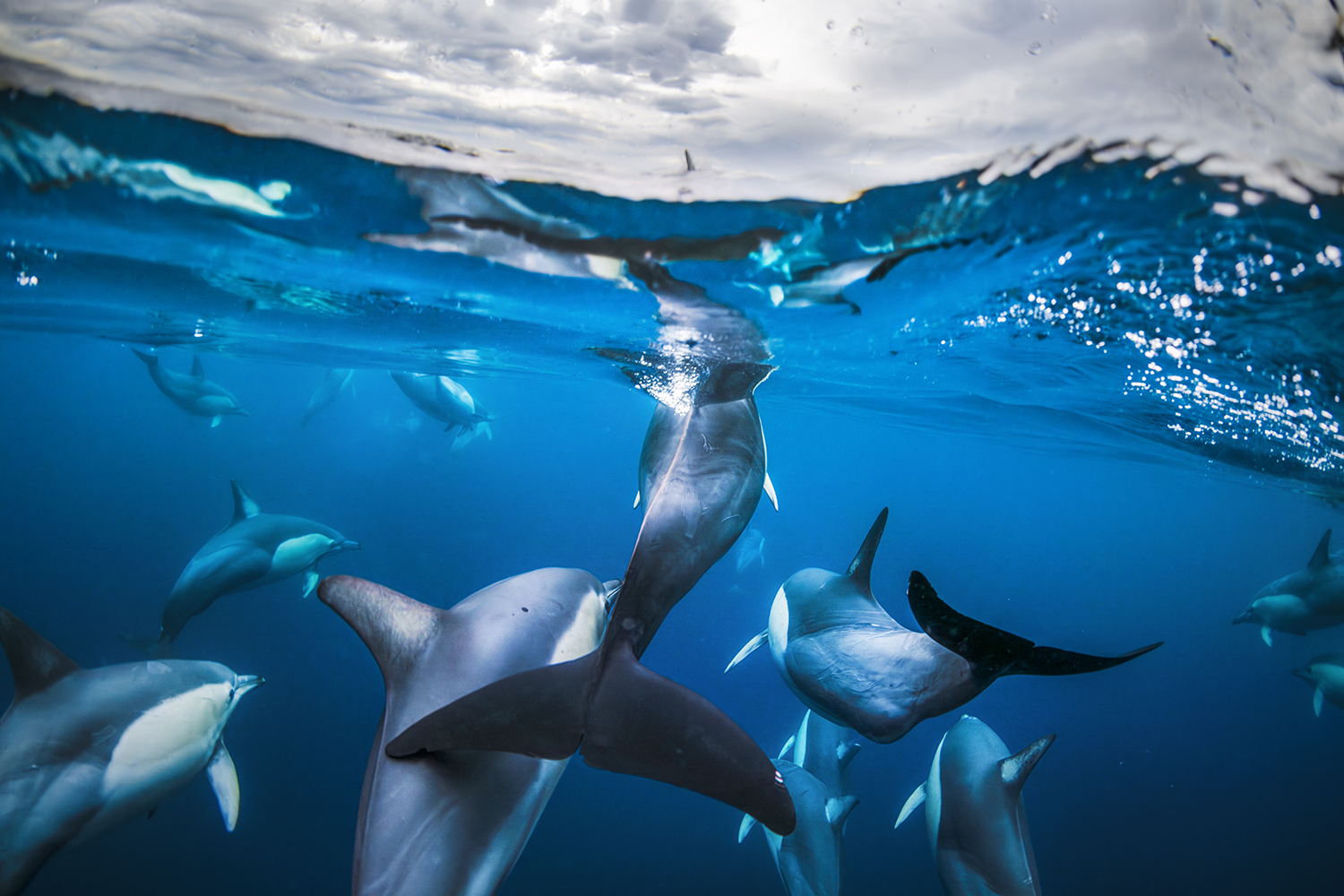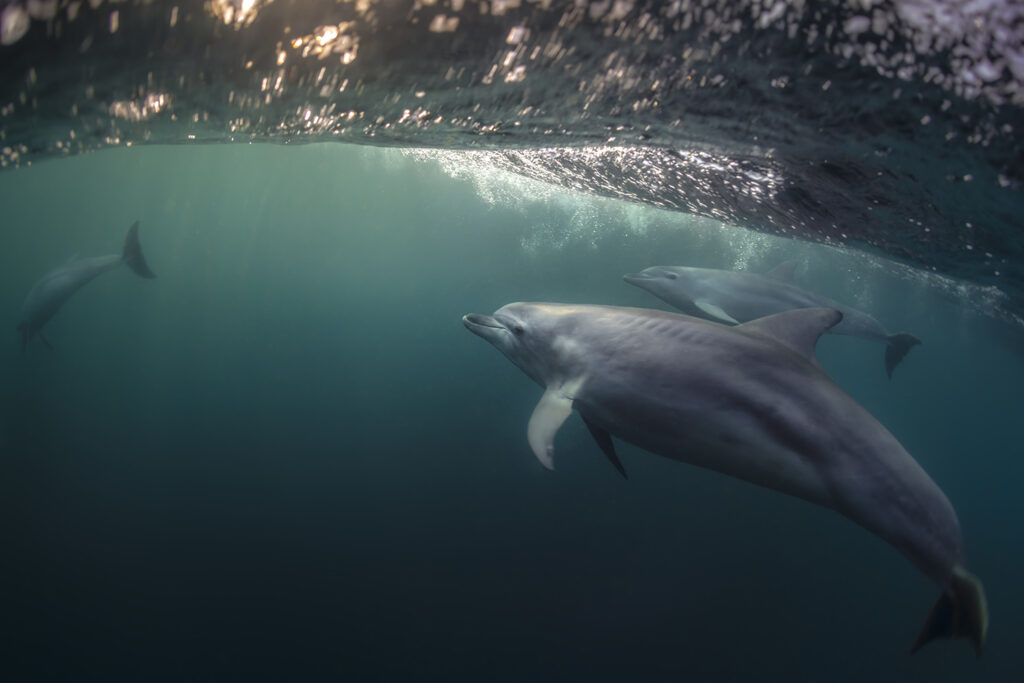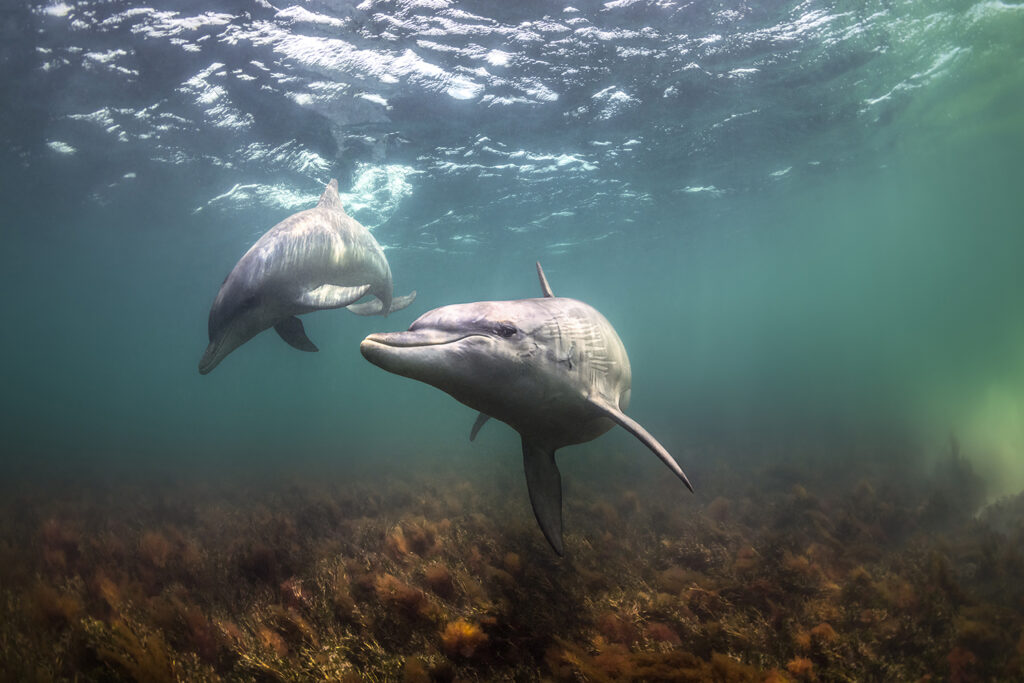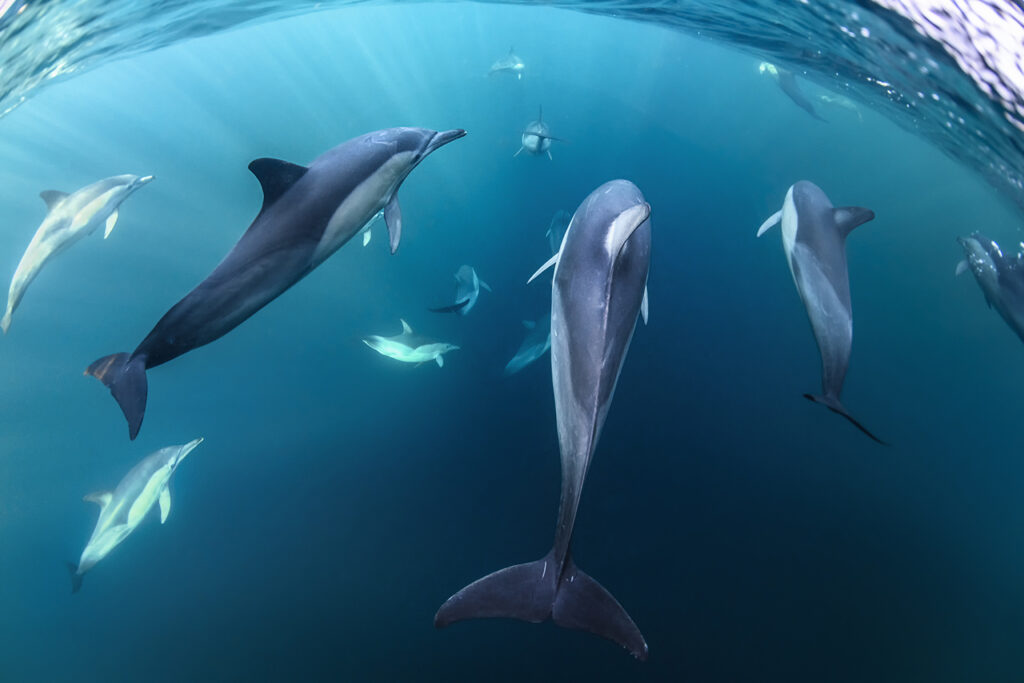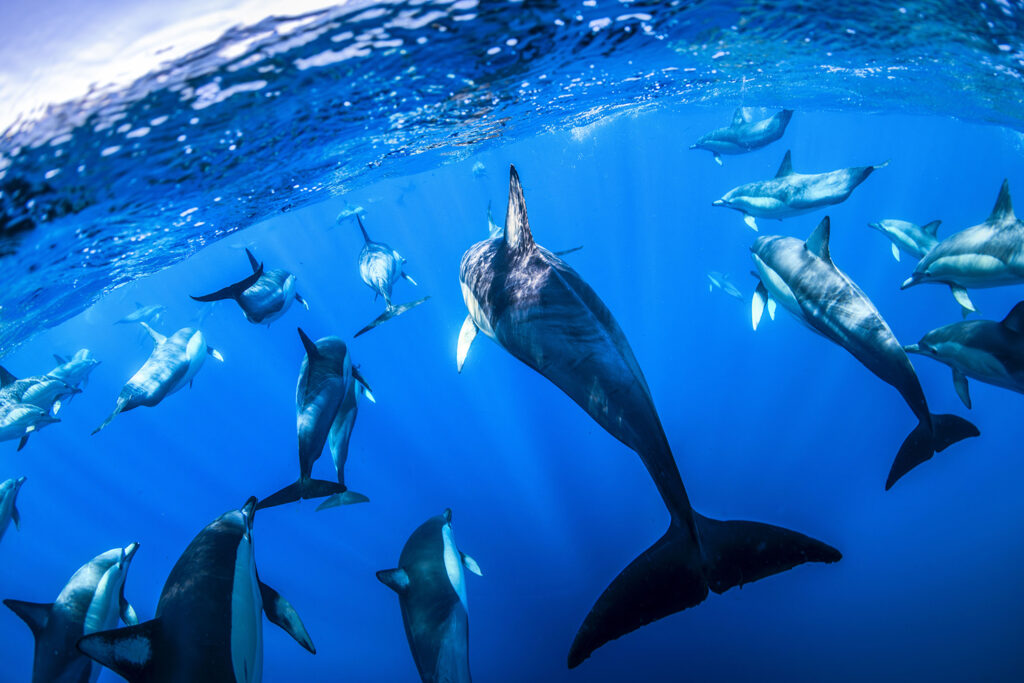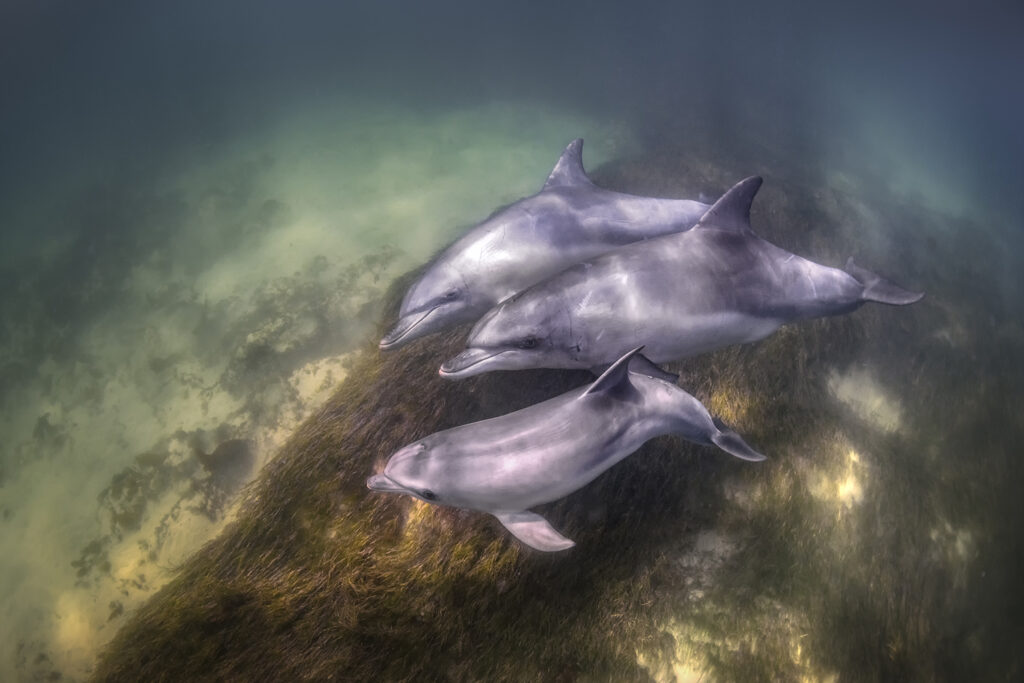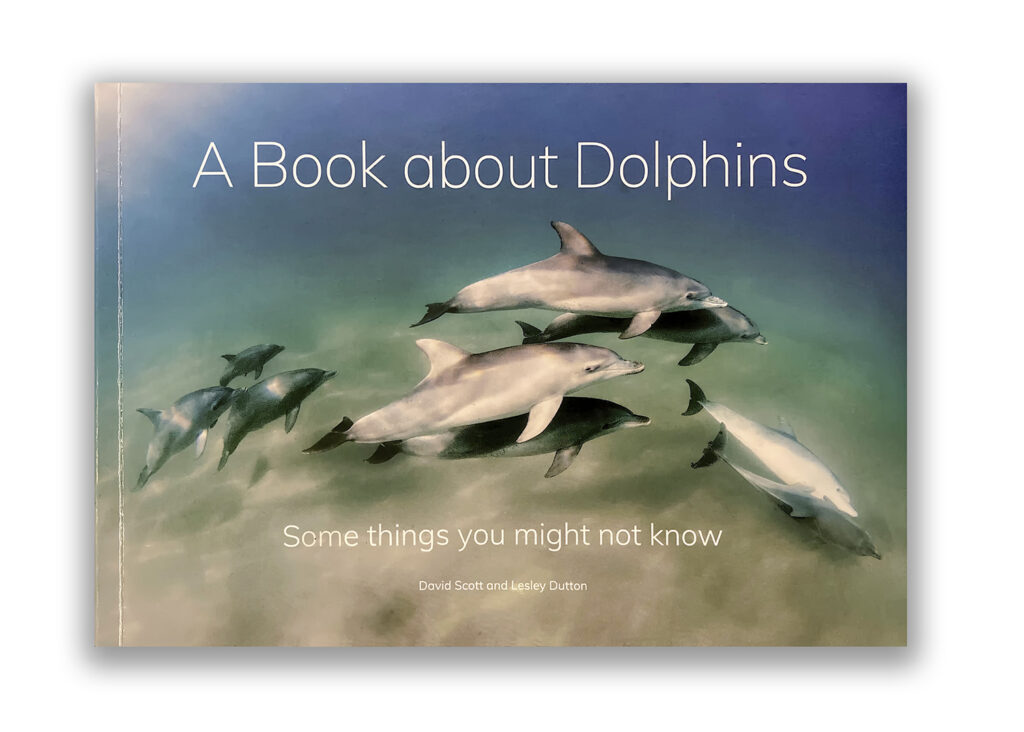Two Bottlenose Species
Among the most well-known members of the dolphin family are the bottlenose dolphins. There are two closely related types: the common bottlenose (Tursiops truncatus) and the Indo-Pacific bottlenose, often referred to as the inshore bottlenose dolphin.
At first glance, they look nearly identical. But there are subtle differences. Indo-Pacific bottlenose dolphins have more slender bodies and longer, narrower beaks. The common bottlenose, on the other hand, is more robust in shape and has a taller, curved dorsal fin. These dolphins also grow about one-third larger and tend to spend more time in deeper waters farther from the coast.
Living in Pods
Dolphins are incredibly social. They typically live in pods of up to a dozen individuals, but when conditions are right, pods can merge into massive “superpods” of hundreds – even thousands – of dolphins. These groups are fluid and ever-changing. Dolphins move between pods freely, forming and breaking connections as needed.
Altruism and Rescue
The bonds between them can be deep and lasting. Dolphins have been seen staying by the side of sick or injured podmates, helping them to the surface to breathe when necessary. This sense of care isn’t limited to their own kind. In New Zealand, a wild dolphin named Moko famously helped guide two stranded pygmy sperm whales back to deeper water. I once witnessed something very similar: a pod of bottlenose dolphins guiding two lost humpback whales safely out of a shallow bay. You can read more about that story in “Lifesaver Dolphins.”
Protecting Other Species
Dolphins have also been known to protect swimmers from sharks, circling them or even charging at the predator to drive it away. Their sense of awareness and empathy is astonishing.
A Human Connection
This connection between dolphins and humans goes back centuries. Reports of cooperative fishing date as far back as ancient Rome. Today, in the Brazilian town of Laguna, dolphins and fishermen still work together. Dolphins herd fish toward shore and signal when to cast the nets. Their reward? A share of the fish that escape.
Learning Through the Pod
Dolphin society is rich with learning and cooperation. Young females observe experienced mothers and learn how to care for calves. If a mother dies, other females – often referred to as “aunties” – have been known to spontaneously begin lactating to feed the orphaned calf. It’s an extraordinary act of shared responsibility.
The Early Days of Life
Newborn dolphins stay in constant physical contact with their mothers. For the first month or more, neither the calf nor the mother sleeps. As the calf grows, it starts venturing slightly farther away, gaining independence day by day. Like human children, they’re guided by the social norms of their community – sometimes corrected with a gentle nip or a tail slap.
Growing Up Wild
Calves remain dependent on their mothers for up to four years, learning everything they need from the pod to thrive in their ocean world.
Inspired by True Experience
Many of the insights in this story come from A Book about Dolphins, written by David and Lesley, who spent over a decade studying wild dolphins in the Port Stephens–Great Lakes Marine Park. Their deep love and respect for these animals comes through in every page – and inspired much of this series.
